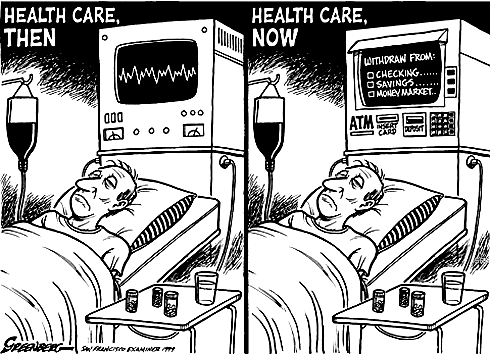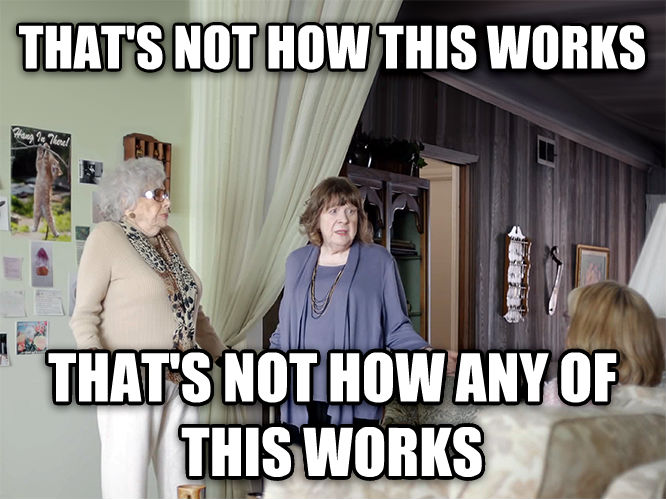
1. Insurance Premium Prices are Just Flat-out Ridiculous.
The insurance game is changing fast. Compared to 10-20 years ago, it has evolved into something that is almost unrecognizable. It appears that the only somewhat affordable plan out there is the high-deductible plan. Yet, this brings forth one huge problem when insurance is actually needed: families are forced to choose only the healthcare that they can afford as opposed to the healthcare that they desperately need.
For example, according to the 2017 figures released by the Milliman Medical Index, the average annual cost of employer-sponsored PPO coverage for a family of four has increased to $26,944. Considering that the average cost of healthcare just 10 years ago was a mere $14,500…. That’s a pretty serious increase. 54% to be precise. For that sort of sticker shock, you’d expect the level of service and outcomes to be better, wouldn’t you? America’s health responds accordingly:

2. Chronic Illness is Epidemic
Unfortunately, there isn’t a vaccine for obesity and diabetes. That seemed to work for the eradication of smallpox and polio, but the epidemics of today are all self-inflicted. No one ever pulled their car through the drive-thru and asked for flame-broiled polio or an 8-piece small pox. Yet today, that is exactly what we are doing. Nowadays, diseases such as rheumatoid arthritis and cancer are affecting 20 and 30 year-olds. Diseases such as these used to be rare or at least acquired in old age. Not anymore. And not only are they prevalent, but they have become the most common and costly (even though preventable) causes of disability and death in the United States. More bad news: contracting one self-inflicted chronic illness sets you up to more than likely acquire another. Why? Because, the majority of the time, the same lifestyle and nutrition that brings on one illness will, more often than not, manifest into other chronic disease as well. Is it a secret? Hardly. It’s just that the current system continues to fail at improving or preventing them.
3. Doctor’s Hate Their Jobs More Than Ever
A statistic that you won’t find in the newspaper or strewn in the glass cases along your local hospital halls is the fact that the sicker America gets, the more physicians become dissatisfied. We would like to think that doctors would become more motivated as they continue to see that what they are currently doing isn’t working. America’s health status chimes back in:

According to a recent survey commissioned by the Physician’s Foundation:
- 1 in 2 doctors are demoralized or dissatisfied with their work
- 63% are pessimistic about the future of the medical system
- And nearly 50% would not recommend their profession to their children
And the incidence of suicide among American physicians is rising at an alarming rate.
Well, that’ll make you think twice about our current system, eh? Take away a physician’s autonomy in their practice and continue to reimburse them based on working at extreme, burn-out inevitable paces and what do you get?
M’urican Healthcare, that’s what.
4. Big Pharma Continues To Figure Out How To Incentivize Doctors
Isn’t it interesting how America allows Pharma companies to advertise on TV and the radio? Think about that for a minute. You become seduced by normal looking people being able to eat what they want and somehow exempt themselves from chronic disease, by simply ingesting a teeny tiny pill, and at the end of the commercial they recommend that you “talk to your doctor to see if 'x' drug is right for you.” And, even after the laundry list of side effects (such as diarrhea, blindness, and slow, agonizing death) you skip merrily to your local primary care practice and still ask if you can partake in the Hollywood portrayed debauchery.
If you are a physician and want to continue to get reimbursed by insurance companies, which is highly driven by your patient satisfaction scores, what do you do? You politely oblige and prescribe the medication. If not, once your patient satisfaction survey hits their mailbox, your patient will surely give you lower scores than that flight attendant that refused to give them a third bag of pretzels. The audacity!!!
But seriously, if the doctor has no ties to Big Pharma incentives or they have actually educated themselves on what performing health looks like in the real world, their conversations with their patients would look quite different whenever the patient comes in their office asking for a drug:

5. Medical Errors are now a top cause of death in America, and Medications are causing disease instead of treating it
Nothing screams “trust” like knowing that our current medical system could actually increase mortality. We would like to think that being prescribed the wrong drug would be our worst-case scenario, but per the latest research, it appears that the secret is out that even the right drugs are known to bring about death and disease. The most surprising fact: this isn’t new. We have all read the back labels of prescription drugs and medications. It’s scary. But for some reason, we keep taking them.
Here’s a fun fact: Deaths from properly prescribed drugs now outnumber the deaths from car accidents.
I will also be the first to admit that not all drugs are evil. Some drugs are literal medical marvels. They play pivotal roles in emergency situations, but even then, they are not cheap.
6. The Current Yearly Physical is Worthless
Worthless? Boy, that’s a strong word. But, think about it. Would chronic illness be at the all-time high that it is if the annual visit to our doctor was cutting it?
What about the labs that insurance will cover; do those even signify disease? Some of them, yes they do. Others are worthless. I can’t tell you the amount of times that clients have said that their "cholesterol numbers look good”, only to run their particle numbers, other inflammatory markers, or have a carotid ultrasound performed to show them that they are 5 years from a stroke. And besides, the current “reference ranges” for lab tests are derived from 95% of a horrendously sick population.
So, when your primary care physician tells you, “well, your numbers look pretty good”, what they are really saying is:
"Congrats, your thyroid levels and blood pressure are within the normal range which has been deduced from a group of diabetic, grandmothers. See you next year, when we will look at other low-value data taken at one single point in time and determine your entire health plan moving forward from this one day, annually.”
Would you be satisfied with that response?
Neither would I.
The take away is that “normal” lab value ranges do not equal “optimal” values.
7. For the first time in history, hospitals offer extreme discounts to cash-pay patients.
According to the Wall Street Journal, many insured and uninsured patients can get significantly better rates on hospital procedures by paying cash.
Say What?!?!
Pretty significant change from 15 years ago when cash paying patients got the short end of the stick, right? But what has changed since then? Well, according to the article, the change is due to two main things:
- New government regulations now protect against price gouging patients
- Hospitals realize that they can get paid much faster through patient cash as opposed to the exhausting administrative work that comes with trying to get paid by the insurance companies.
But what could this trend mean for you? Well, if you are looking into the cash-based medical model but still looking to hold on to a high deductible insurance plan for emergencies, it could mean great things for you. Chronic illness is preventable. Most emergencies are not. So, why throw money at the conventional, ineffective model? Something to think about, right?
8. More and More Americans are Seeking Alternatives to the Current Medical Model
The biggest question that most Americans are actively seeking a valid answer for is: "How can I continue to save on healthcare costs without sacrificing my quality of care and actually receiving more of a return on my investment?"
Is this even possible? Of course! We see it daily in our interactions and outcomes with our members. Look further, and you will also see it in other trends such as the growing popularity of corporate wellness-based incentives and the growing interest in integrative and functional medicine.
Let’s face it, America must embrace a new healthcare model. One that is not only patient-centered and goes way beyond a single annual visit, but one that is most importantly “performance-based.” HPHI is pioneering exactly that. We specifically tailor health plans according to what the patient needs, not simply what their insurance will cover. That’s like not changing your oil or tires on your vehicle because your auto-insurance refuses to cover those necessities. It’s still your problem to own.
So, what do we do differently? We combine the latest wearables, online software, and current lifestyle-based medical knowledge with on-going medically supervised guidance to collaborate with our members in seeking and eliminating the root cause of their illness and ailments. We empower the member. We do not handicap them based on what services we can get paid for.
No hidden incentives; no ridiculous, ineffective insurance hoops to jump through; and no jaw-dropping billing surprises. Just affordable progress, results, and a community of those who want to be better. Good luck finding that at your local walk-in clinic.

-1.jpg)
-1.jpg)



